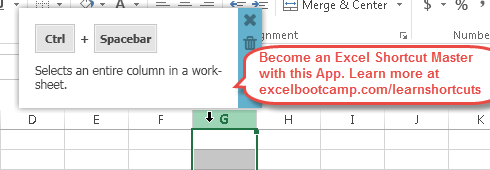Reference Excel Columns Across Sheets Easily

Mastering the art of referencing Excel columns across different sheets is a key skill that can significantly enhance productivity and efficiency in data management. Whether you're a financial analyst handling large datasets, a project manager juggling multiple timelines, or a student organizing research data, knowing how to navigate and link data between sheets can transform your work process. This comprehensive guide will delve into the various techniques to achieve seamless data referencing in Excel, ensuring your work is not only error-free but also streamlined and easy to manage.
Understanding Excel Sheet References

Before diving into the methods, it's crucial to understand how Excel refers to different cells and sheets:
- Cell Reference: Refers to individual cells using letters for columns (A, B, C, etc.) and numbers for rows (1, 2, 3, etc.).
- Sheet Reference: Uses the sheet name followed by an exclamation mark (Sheet2!A1) to indicate the specific location.
- Range Reference: Indicates a block of cells (A1:B5).
💡 Note: Always ensure that the sheet names do not contain special characters or spaces to avoid referencing errors.
Basic Techniques for Referencing Columns Across Sheets

Direct Reference

The simplest way to reference data from another sheet is by using a direct reference:
=SheetName!ColumnLetter
This formula will automatically update if you change the data in the referenced cell or sheet. Here's how you apply it:
- Click on the cell where you want the data to appear.
- Type '=' followed by the sheet name, an exclamation mark, and the cell address or range you want to reference.
Using Named Ranges

Excel's Named Ranges feature allows you to assign names to specific cells or ranges:
- Select the cells or range you wish to name.
- Go to the Formulas tab, click on Define Name, and provide a name for your range.
- You can now use this name in formulas across sheets.
Named ranges are particularly useful for creating dynamic and readable formulas:
=SUM(SalesData)
⚠️ Note: Named ranges do not automatically update if you insert columns or rows; you must adjust them manually.
VLOOKUP Across Sheets

VLOOKUP can be used to search for values in a column and return corresponding values from another column, even across different sheets:
=VLOOKUP(lookup_value, SheetName!range, col_index_num, [range_lookup])
Example:
| Sheet1 | Sheet2 |
|---|---|
| A1: Product Code | A1: Product Code |
| B1: Product Name | B1: Price |
| A2: 001 | A2: 001 |
| B2: Laptop | B2: 800 |

In Sheet1, you could find the price by:
=VLOOKUP(A2, Sheet2!A1:B5, 2, FALSE)
3D References

For summing or averaging data across multiple sheets:
=SUM(Sheet1:Sheet5!A1)
This command will sum the values of cell A1 from Sheet1 through Sheet5.
Advanced Techniques

Using INDIRECT

The INDIRECT function converts a text string into a cell reference. It’s useful when you need dynamic references:
=INDIRECT("'" & A1 & "'!A1")
Where A1 contains the sheet name you want to reference.
Offset for Dynamic Range

The OFFSET function allows you to reference a range dynamically, which can change size or position:
=OFFSET(Sheet1!A1, rows, columns, height, width)
📝 Note: OFFSET is a volatile function; it recalculates with every change, impacting performance in large spreadsheets.
Tips for Efficient Excel Sheet Management

- Use Table Structures: Converting data into a table format makes references easier to manage and understand.
- Consistent Naming Conventions: Ensure sheet names and cell references follow a clear, consistent naming strategy.
- Utilize Comments: Add comments to formulas to explain what they do, especially when referencing across sheets.
- Data Validation: Use data validation to ensure consistency across linked data sources.
By embracing these techniques and tips, your data management in Excel will become more intuitive and less error-prone. Whether you're compiling financial reports, tracking project progress, or organizing research, these methods will empower you to handle data across multiple sheets efficiently, reducing the time spent on manual data entry and increasing the accuracy of your work.
How do I reference a cell in another sheet in Excel?

+
Reference a cell in another sheet by typing =SheetName!CellAddress into the cell where you want the data to appear.
Can Excel reference a cell in another workbook?

+
Yes, by using an external reference, e.g., =[WorkbookName]SheetName!CellAddress.
What is the benefit of using named ranges when referencing data?

+
Named ranges make formulas more readable and dynamic, allowing you to refer to specific data ranges without worrying about cell addresses changing.